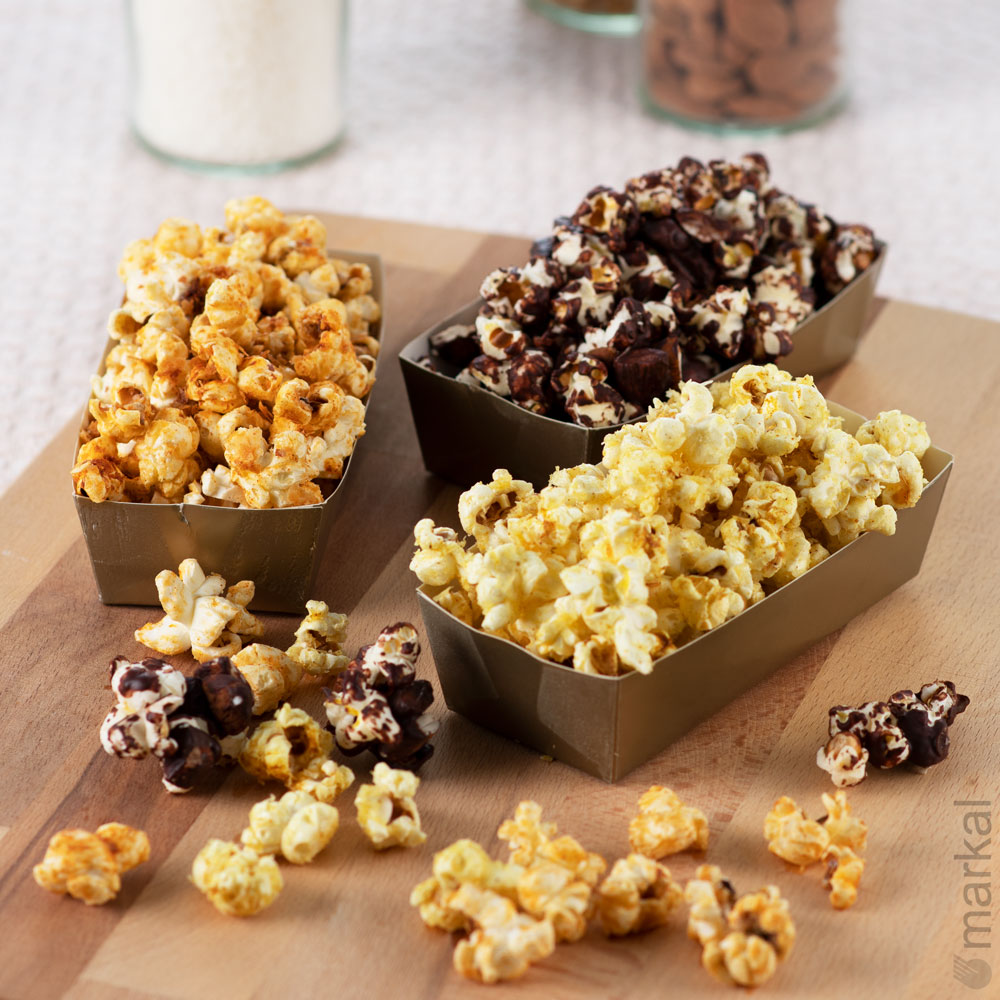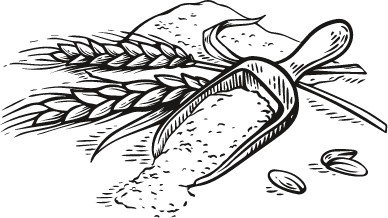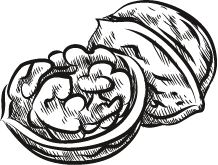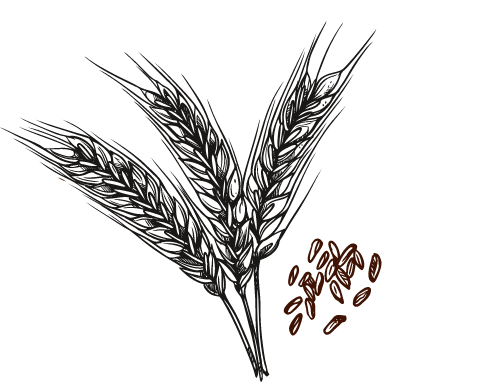
Popcorn is often perceived as too fatty or too sweet, yet it is only popped corn. A neutral ingredient that can be used in many different ways, as long as the filling is under control. Welcome to the world of popcorn, a convenient food to (re)discover!
All you need to know about popcorn
Popcorn is no more or less than corn kernels heated to a very high temperature, which literally pop under the effect of the heat. However, there is no point heating a can of corn, as this phenomenon only occurs with a particular variety of corn, which has hard kernels and is particularly rich in water. When the corn heats up, the water inside turns into steam. The hard hull does not allow pressure to escape, causing it to increase until the hull bursts. If some kernels sometimes remain unpopped at the bottom of the container, it is because their moisture content was insufficient. Once the kernel has popped, it can be garnished, but the term popcorn refers only to the corn itself, not the seasoned recipe.
Popcorn balls and winged popcorn
Popcorn is made from a single variety of corn, which can take two different shapes when it pops. These two shapes have been identified as two varieties, ‘butterfly’ popcorn and ‘mushroom’ popcorn.
- The butterfly variety is the best known and most popular. This is the one used for homemade popcorn and plain popcorn in cinemas. It is distinguished by its wings or petals popping, creating irregular shapes.
- The mushroom variety pops more evenly, creating firm, round, crispy balls. They are mainly used for caramel-coated popcorn and cereals.
Corn and popcorn: an American story
Although popcorn has enjoyed fame in cinemas, it has been consumed across the Atlantic for thousands of years. Inseparable from American history, corn was used as a basic food ingredient, as an ornament for clothing and accessories, and even worshipped in the form of a corn god. Legends vary as to the appearance of popcorn, but the oldest popped kernels were discovered in New Mexico and have been dated to over 5000 years ago. Commonly consumed over the centuries by North American Indians, popcorn was later adopted by settlers and became part of American culinary habits.
The term popcorn as it exists today owes its success to the invention of the popcorn machine, patented by the American confectioner Charles Cretors in 1893. This wheeled trolley quickly became a must-have at amusement parks and sports events, and later at the cinema. The industry also offers canned popcorn and corn to pop at home, on the stove and later in the microwave. The latest revolution? The arrival of organic popcorn !
Cinema popcorn
Although popcorn is now its most faithful ally, in its early days, popcorn nevertheless struggled to establish itself in cinemas. Why? Fear of crumbs and chewing noises, not very compatible with silent films. We had to wait for the arrival of talking pictures in 1927 to see popcorn in cinemas, then the Great Depression in 1929 for its low price to make it the preferred snack.
Does popcorn have any benefits ?
Yes, and more than one. Far from the image of the ultra-processed product in a bag, popcorn is originally just popped corn. Naturally, it is neither fattier nor sweeter than corn, and is even low in calories. Because it is puffed, its volume is greater than that of regular corn: the calorie intake is the same but the feeling of fullness is faster, making plain popcorn an ideal snack. A source of protein, it contains fibre and is naturally gluten-free.
Finally, popcorn is cheap, easy to cook and particularly versatile! It can be eaten plain or seasoned, as a snack or in a meal, replacing bread or appetisers. As long as the recipe is homemade, ideally from organic popcorn and with a well-chosen filling, it is as healthy as it is tasty.
How do I cook popcorn properly ?
The real challenge of popcorn is therefore its seasoning, which can make it a light salty snack as well as a decadent sweet treat. Before choosing it, be mindful of what you need: it is perfectly possible to opt for a comforting sweet recipe, as long as it is not eaten to excess and, if possible, prepared at home from quality products. Likewise, there are savoury mixes as healthy as they are tasty to flavour popcorn. Running out of ideas? For a change from butter, salt and sugar, discover popcorn with different Markal flavours!
How do I cook popcorn ?
To pop, the popcorn should be heated to approx. 180°C. There are containers specifically designed for microwave cooking. However, the simplest and healthiest solution is still to use a saucepan or pan with a suitable lid: cover the bottom with popcorn kernels, cover and heat on the stove. When the first grains pop, lower the heat and turn it off. Only remove the lid when all the kernels have popped, i.e. when the pan is quiet. When cooking large amounts of popcorn, cook it in several batches, as an overfilled container will prevent the kernels from popping.
Some ideas for using popcorn…
- Replace the croutons in a soup with popcorn;
- Decorate verrines with a few popped kernels;
- Add popcorn to your salads to make them crunchy;
- Serve savoury popcorn with herbs or spices as an appetiser;
- Replace mass-produced snacks with chocolate popcorn;
- Create traditional American popcorn garlands with thread and needle!








